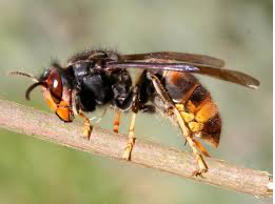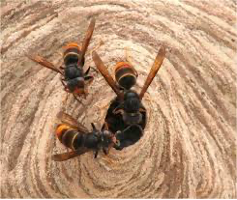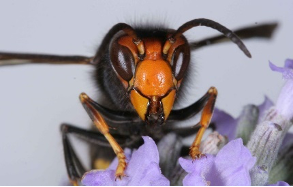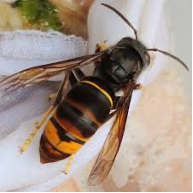
The Asian "Yellow-legged" Hornet
There is a growing threat in the UK and our local area from the Asian "Yellow-legged" hornet (AH), or "Vespa velutina”. As the name suggests, the AH originates from Asia and arrived in Europe by unintentionally hitching a lift in a cargo from China that was unloaded in France in 2004 with it's stowaway. Since then that single mated AH female queen has gradually spawned many thousands of daughters, granddaughters and so on, thus more nests each year.
- The threat is not just to bees and beekeepers (as the AHs use honeybees as food), but many other pollinators too.
- Fruit farmers, vineyards and other agriculture are also at risk, as AHs have proved to be very damaging to crops of sugary fruit.
- The AH has a sting that injects a venom far stronger than that of a bee or wasp and the insect is highly defensive - if someone were to accidentally disturb an active AH nest in a tree or hedge by a path say, the AH colony would attack immediately and aggressively.
Why is the Asian Hornet a Problem?
- The Asian hornet is a highly effective non-native predator and our existing ecosystems have not had the time to adjust to this species.
- The Asian hornet has a voracious appetite for some beneficial pollinators, particularly bees. British pollinators are already under stress due to a loss of habitat, increased use of pesticides and changes in the climate.
- The Asian hornet poses a significant new and additional threat to native British insect populations. Insects are a vital resource of food, and their loss affects many other species throughout the food chain. Currently many food chain links are unstable. If even one link is altered, the entire chain may collapse. This poses a great threat to the natural world and therefore to humans who rely on the health of the natural world to survive.
- The European hornet (Vespa crabro) is native and therefore a stablished species, which helps to maintain the natural balance of other invertebrates, predating on other pollinators that are often regarded as garden and agricultural pests such as flies, beetles and wasps. European hornets don’t usually predate on bees. Asian hornets, on the other hand, are specialised bee predators.
- Neither Asian or European hornet species is naturally aggressive, however they are both especially protective and defensive of their nests and when disturbed will attack
What does an Asian Hornet look like?
- Workers up to 25mm long
- Yellow/orange face
- Entirely dark thorax
- Dark abdomen except 4th segment which has yellow band
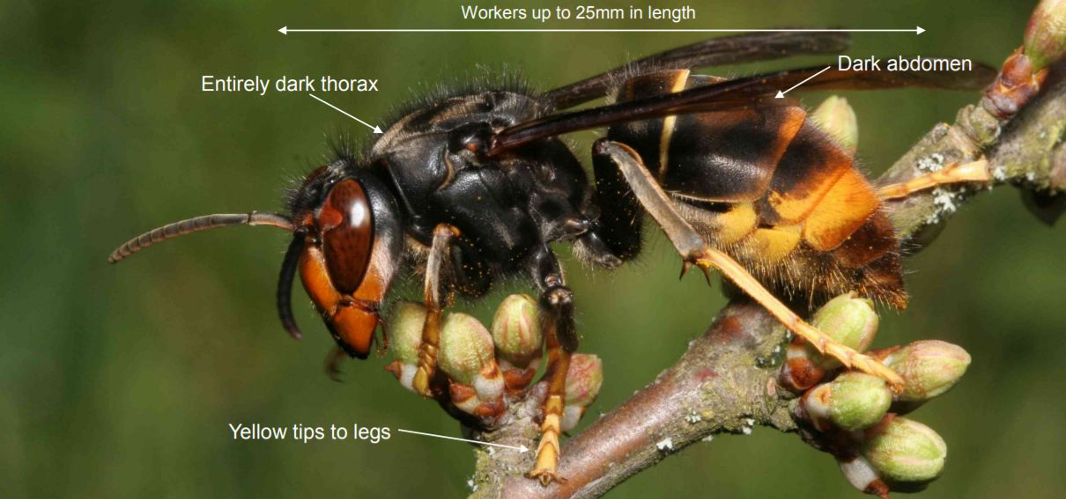
Comparison of the Asian Hornet to other similar insects
It is quite easy to confuse the Asian hornet with our native European hornet or wasp
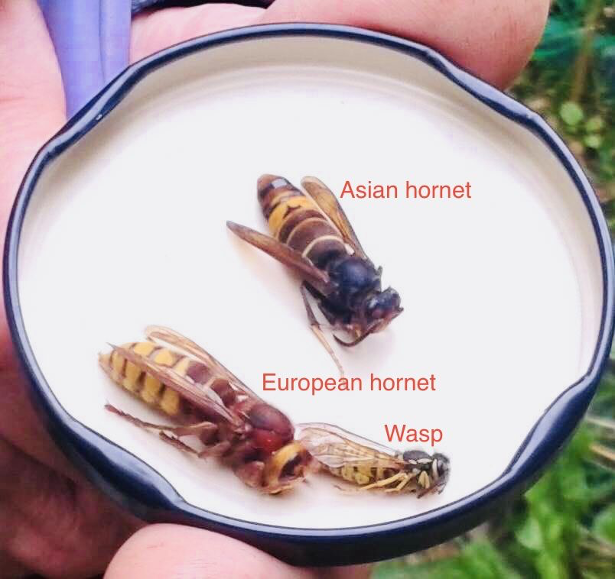
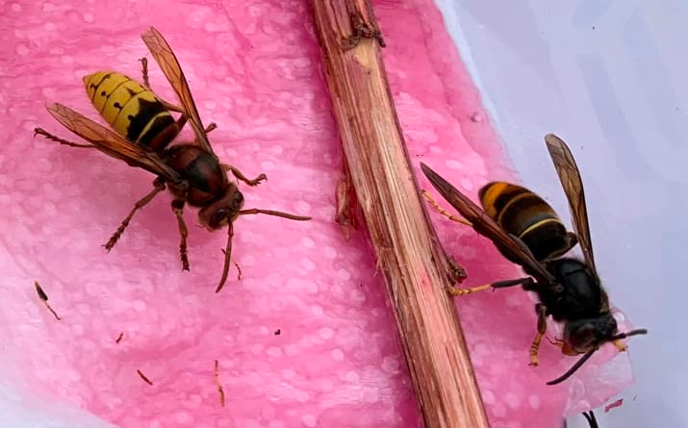

Asian Hornet compared with European Hornet

Insect look-a-likes




Asian Hornet Nests
Asian Hornet queens that survive the winter often build their initial nest low down in a hedge but then abandon it after several months and then rapidly build another high in a tree.

WHAT DO I DO IF I SEE AN ASIAN HORNET?
Please help us if you think you have spotted an ASIAN HORNET. Ideally download the Asian Hornet Watch App in advance on your mobile phone and use it to send in your photo.
Not got your mobile?
Email a photo to:
[email protected]
or online
Reporting the Asian Hornet
- Please try to photograph it with your phone
- Send the details via the App to the Government department
- If safe, you could try to catch it under a cup, jar or something secure, or squash it and keep it safe
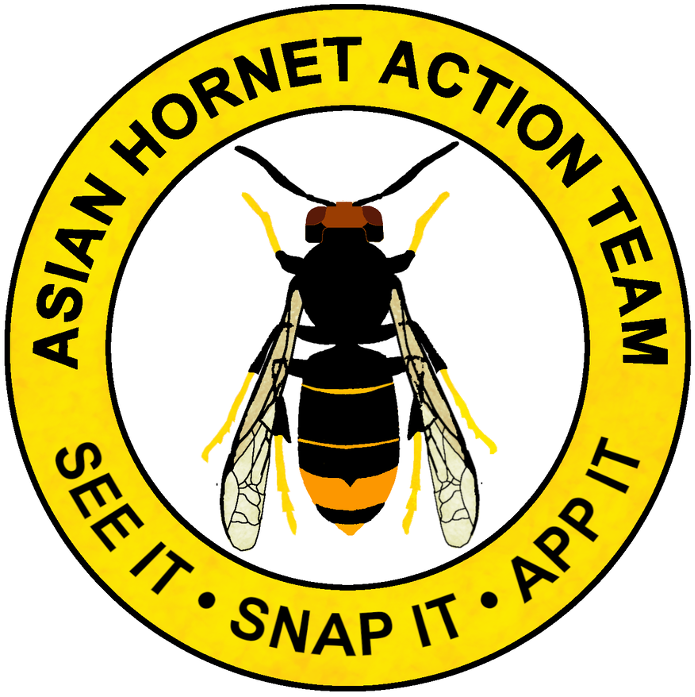
More information on the Asian Hornet
- Chichester Beekeepers Asian hornet action team: [email protected]
- British Beekeepers Association Asian Hornet website
- Somerset Beekeepers Association Asian Hornet website
- National Bee Unit Asian Hornet website

